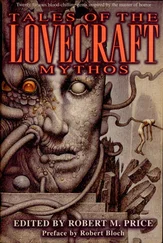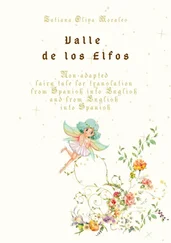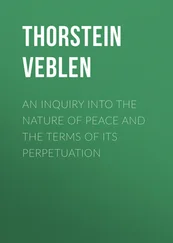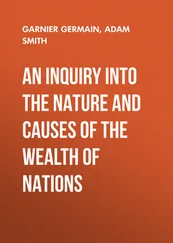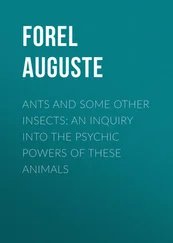Robert Pirsig - Lila. An Inquiry Into Morals
Здесь есть возможность читать онлайн «Robert Pirsig - Lila. An Inquiry Into Morals» весь текст электронной книги совершенно бесплатно (целиком полную версию без сокращений). В некоторых случаях можно слушать аудио, скачать через торрент в формате fb2 и присутствует краткое содержание. Жанр: Современная проза, на английском языке. Описание произведения, (предисловие) а так же отзывы посетителей доступны на портале библиотеки ЛибКат.
- Название:Lila. An Inquiry Into Morals
- Автор:
- Жанр:
- Год:неизвестен
- ISBN:нет данных
- Рейтинг книги:3 / 5. Голосов: 1
-
Избранное:Добавить в избранное
- Отзывы:
-
Ваша оценка:
- 60
- 1
- 2
- 3
- 4
- 5
Lila. An Inquiry Into Morals: краткое содержание, описание и аннотация
Предлагаем к чтению аннотацию, описание, краткое содержание или предисловие (зависит от того, что написал сам автор книги «Lila. An Inquiry Into Morals»). Если вы не нашли необходимую информацию о книге — напишите в комментариях, мы постараемся отыскать её.
Lila. An Inquiry Into Morals — читать онлайн бесплатно полную книгу (весь текст) целиком
Ниже представлен текст книги, разбитый по страницам. Система сохранения места последней прочитанной страницы, позволяет с удобством читать онлайн бесплатно книгу «Lila. An Inquiry Into Morals», без необходимости каждый раз заново искать на чём Вы остановились. Поставьте закладку, и сможете в любой момент перейти на страницу, на которой закончили чтение.
Интервал:
Закладка:
What do we do all night? Phædrus asked.
In the center of the teepee there will be a fire, and there will be ceremonies connected to it, and a lot of singing and drumming. Not much talking. After the meeting is over in the morning there’ll be a ceremonial meal.
Phædrus thought about it and then agreed and asked what the meal was like.
Dusenberry smiled with a kind of arch smile. He said, One time they were supposed to have the food, you know, from before the white men came. Blueberries and venison and all that and so what did they do? They broke out three cans of DelMonte corn and started opening all the cans with a can opener. I stood it as long as I could. Finally I told them "No! No! No! Not canned corn," and they laughed at me. They said, "Just like a white man. Has to have everything just right." Then after that, all night long they did everything the way I said and they thought that was an even bigger joke because now they weren’t only using white man’s corn they were having a white man run the ceremony. And they were all laughing at me. They’re always doing stuff like that. We just love each other. I just have the best time when I’m down there.
What’s the purpose of staying up all night? Phædrus asked.
Dusenberry looked at him meaningfully. Visions, he said.
From the fire?
There’s a sacramental food that you take that induces them. It’s called "peyote."
That was the first time Phædrus had ever heard the name. This was just before Leary and Alpert’s notoriety and the great age of hippies, trippers and flower children that peyote and its synthetic equivalent, LSD, helped to produce. Peyote back then was all but unknown to almost everyone except anthropologists and other specialists in Indian affairs.
In the tray of slips, just back of the ones on Dusenberry, was a section of slips on how the Indians had quietly brought peyote up from Mexico in the late nineteenth century, eating it to induce an altered mental state that they considered a form of religious communion. Dusenberry had indicated that Indians who used it regarded it as a quicker and surer way of arriving at the condition reached in the traditional vision quest where an Indian goes out into isolation and fasts and prays and meditates for days in the darkness of a sealed lodge until the Great Spirit reveals itself to him and takes over his life.
On one of his slips Phædrus had copied a reference that showed the similarity of the peyote experience to the old vision quest descriptions. According to the description it produces light-headedness, a state of well-being, and increased attention to all perceptions, sensations, and inner mental events.
Perceptual modifications follow, initially manifested by vivid and spontaneous visual imagery, which evolves to illusions and finally to visual hallucinations. Emotions are intensified, vary widely in content, and may include euphoria, apathy, serenity, or anxiety. The intellect is drawn to the analysis of complex realities or transcendental questions. Consciousness expands to include all these responses simultaneously. In later stages, following a large dose of a hallucinogen, a person may experience a feeling of union with nature associated with a dissolution of personal identity, engendering a state of beatitude or even ecstasy. A dissociative reaction, in which the subject loses contact with immediate reality, may also occur. A subject may experience abandonment of the body, may see elaborate visions, or feel the imminence of death, which could lead to terror and panic. The experience is determined by the person’s mental state, the structure of his or her personality, the physical setting, and cultural influences.
The source Phædrus had taken this material from concluded that current research and discussion are clouded by political and social issues, which since the 1960s has certainly been true. One slip noted that Dusenberry had been asked to testify before the Montana legislature on the matter. The president of the college had told him not to say anything, presumably to avoid political repercussions. Dusenberry complied, and told Phædrus later how guilty he felt about this.
After the sixties the whole issue of peyote became one of those no-win political contests between individual freedom on the one hand and democracy on the other. Clearly LSD was injuring some innocent people with hallucinations that led to their death, and clearly the majority of Americans wanted drugs such as LSD made illegal. But the majority of Americans were not Indians and certainly they were not members of the Native American Church. There was a persecution of a religious minority going on here, something that’s not supposed to happen in America.
The majority opposition to peyote reflected a cultural bias, the belief, unsupported by scientific or historical evidence, that hallucinatory experience is automatically bad. Since hallucinations are a form of insanity, the term hallucinogen is clearly pejorative. Like early descriptions of Buddhism as a heathen religion and Islam as barbaric, it begs some metaphysical questions. The Indians who use it as part of their ceremony might with equal accuracy call it a de-hallucinogen, since it’s their claim that it removes the hallucinations of contemporary life and reveals the reality buried beneath them.
There is actually some scientific support for this Indian point of view. Experiments have shown that spiders fed LSD do not wander around doing purposeless things as one might expect a hallucination would cause them to do, but instead spin an abnormally perfect, symmetrical web. That would support the de-hallucinogen thesis. But politics seldom depends on facts for its decisions.
Behind the index card for the PEYOTE slips was another card called RESERVATION. There were more than a hundred RESERVATION slips describing that ceremony Dusenberry and Phædrus attended — way too many. Most would have to be junked. He’d made them because at one time it looked as though the whole book would center around this long night’s meeting of the Native American Church. The ceremony would be a kind of spine to hold it all together. From it he would branch out and show in tangent after tangent the analysis of complex realities and transcendental questions that first emerged in his mind there.
The place can be seen from U.S. 212, about two-hundred yards from the highway, but all you see from the road is tar-papered shacks and grungy dogs and maybe a poorly dressed Indian walking on an earth footpath past some junked cars. As if to make a point of the shabbiness, a clean white steeple of a missionary church stands in the middle of all this.
Away from the steeple, off by itself (and probably gone by now) was a large teepee that looked like it might have been put up as a tourist attraction except that there was no way you could drive to it from the road and there were no billboards or signs around advertising anything for sale.
The physical distance to that teepee from the highway was about two-hundred yards, but culturally the distance bridged with Dusenberry that night was more like thousands of years. Phædrus couldn’t have gone that distance without the peyote. He would have just sat there observing all this objectively like a well-trained anthropology student. But the peyote prevented that. He didn’t observe, he participated, exactly as Dusenberry had intended he should do.
From twilight, when the peyote buttons were passed around, until midnight he sat staring across the flames of the ceremonial fire. The ring of Indian faces around the edge of the teepee had seemed ominous at first in the alternating light and shadow from the fire. The faces seemed misshapen, with sinister expressions like the story-book Indians of old; then that illusion passed and they seemed merely inscrutable.
Читать дальшеИнтервал:
Закладка:
Похожие книги на «Lila. An Inquiry Into Morals»
Представляем Вашему вниманию похожие книги на «Lila. An Inquiry Into Morals» списком для выбора. Мы отобрали схожую по названию и смыслу литературу в надежде предоставить читателям больше вариантов отыскать новые, интересные, ещё непрочитанные произведения.
Обсуждение, отзывы о книге «Lila. An Inquiry Into Morals» и просто собственные мнения читателей. Оставьте ваши комментарии, напишите, что Вы думаете о произведении, его смысле или главных героях. Укажите что конкретно понравилось, а что нет, и почему Вы так считаете.

